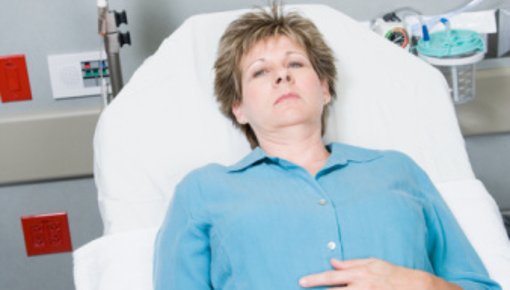Al-Omran M, Albalawi ZH, Tashkandi MF et al. Enteral versus parenteral nutrition for acute pancreatitis. Cochrane Database Syst Rev 2010; (1): CD002837.
Bakker OJ, van Brunschot S, van Santvoort HC et al. Early versus on-demand nasoenteric tube feeding in acute pancreatitis. N Engl J Med 2014; 371(21): 1983-1993.
Besselink M, van Santvoort H, Freeman M et al. IAP/APA evidence-based guidelines for the management of acute pancreatitis. Pancreatology 2013; 13(4 Suppl 2): e1-15.
Boxhoorn L, Voermans RP, Bouwense SA et al. Acute pancreatitis. Lancet 2020; 396(10252): 726-734.
Deutsche Gesellschaft für Ernährungsmedizin (DGEM). S3-Leitlinie Klinische Ernährung bei Pankreaserkrankungen. AWMF-Registernr.: 073-025. 2024.
Gou S, Yang Z, Liu T et al. Use of probiotics in the treatment of severe acute pancreatitis: a systematic review and meta-analysis of randomized controlled trials. Crit Care 2014; 18(2): R57.
Hsieh PH, Su HY, Lin CY et al. Infection rate among nutritional therapies for acute pancreatitis: A systematic review with network meta-analysis of randomized controlled trials. PLoS One 2019; 14(7): e0219151.
Institute for Quality and Efficiency in Health Care (IQWiG, Germany). Projects and results. 2025.
Johnson CD, Besselink MG, Carter R. Acute pancreatitis. BMJ 2014; 349: g4859.
Meng W, Yuan J, Zhang C et al. Parenteral analgesics for pain relief in acute pancreatitis: a systematic review. Pancreatology 2013; 13(3): 201-206.
Meng WB, Li X, Li YM et al. Three initial diets for management of mild acute pancreatitis: a meta-analysis. World J Gastroenterol 2011; 17(37): 4235-4241.
Moody N, Adiamah A, Yanni F et al. Meta-analysis of randomized clinical trials of early versus delayed cholecystectomy for mild gallstone pancreatitis. Br J Surg 2019; 106(11): 1442-1451.
Poropat G, Giljaca V, Hauser G et al. Enteral nutrition formulations for acute pancreatitis. Cochrane Database Syst Rev 2015; (3): CD010605.
Tenner S, Baillie J, DeWitt J et al. American College of Gastroenterology guideline: management of acute pancreatitis. Am J Gastroenterol 2013; 108(9): 1400-1415; 1416.
Tian X, Pi YP, Liu XL et al. Supplemented Use of Pre-, Pro-, and Synbiotics in Severe Acute Pancreatitis: An Updated Systematic Review and Meta-Analysis of 13 Randomized Controlled Trials. Front Pharmacol 2018; 9: 690.
Vaughn VM, Shuster D, Rogers MA et al. Early Versus Delayed Feeding in Patients With Acute Pancreatitis: A Systematic Review. Ann Intern Med 2017; 166(12): 883-892.
IQWiG health information is written with the aim of helping people understand the advantages and disadvantages of the main treatment options and health care services.
Because IQWiG is a German institute, some of the information provided here is specific to the German health care system. The suitability of any of the described options in an individual case can be determined by talking to a doctor. informedhealth.org can provide support for talks with doctors and other medical professionals, but cannot replace them. We do not offer individual consultations.
Our information is based on the results of good-quality studies. It is written by a team of health care professionals, scientists and editors, and reviewed by external experts. You can find a detailed description of how our health information is produced and updated in our methods.

